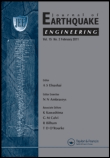
JOURNAL OF EARTHQUAKE ENGINEERING
Scope & Guideline
Exploring the forefront of earthquake engineering.
Introduction
Aims and Scopes
- Seismic Design and Analysis:
The journal emphasizes research on innovative design methodologies and analytical techniques for structures subjected to seismic loads, including performance-based design and risk assessment. - Structural Health Monitoring and Damage Assessment:
A significant portion of the research is dedicated to developing and applying methods for real-time monitoring of structural integrity and assessing damage post-earthquake. - Seismic Risk Mitigation Strategies:
The journal publishes studies on various strategies for reducing seismic risk, including retrofitting techniques, new construction methods, and the use of advanced materials. - Ground Motion Prediction and Site Response Analysis:
Research on predicting ground motion characteristics and analyzing site effects on seismic responses is a core focus, aiding in the development of more reliable design codes. - Soil-Structure Interaction:
The interaction between soil and structural systems under seismic loading is a critical area of research, examining how different soil conditions affect building performance. - Innovative Materials and Technologies:
The journal encourages exploration of new materials and technologies, such as smart materials and damping systems, to enhance the seismic performance of structures.
Trending and Emerging
- Machine Learning and AI Applications:
There is a growing trend towards incorporating machine learning and artificial intelligence techniques in seismic vulnerability assessment, damage detection, and predictive modeling, enhancing the efficiency and accuracy of analyses. - Performance-Based Seismic Design:
Research increasingly emphasizes performance-based seismic design methodologies that focus on achieving specific performance objectives rather than merely adhering to code requirements. - Resilience and Recovery Planning:
Emerging studies focus on the resilience of communities and infrastructure systems, exploring strategies for recovery and mitigation of seismic impacts on urban areas. - Risk Assessment and Management Frameworks:
There is a rise in the development of comprehensive risk assessment frameworks that integrate probabilistic approaches, allowing for better understanding and management of seismic risks. - Sustainable and Eco-Friendly Construction Practices:
The journal is seeing an increase in research on sustainable materials and construction practices that not only enhance seismic performance but also reduce environmental impact.
Declining or Waning
- Traditional Static Analysis Methods:
There is a noticeable decline in studies focused on conventional static analysis methods for seismic design, as the field increasingly favors dynamic and performance-based approaches. - Historical Seismic Retrofitting Techniques:
Research on older retrofitting techniques that do not incorporate modern materials or technologies is becoming less common, as new methodologies gain prominence. - Generalized Risk Assessment Models:
Studies employing generalized or overly simplistic risk assessment models are diminishing in favor of more nuanced, data-driven approaches that consider site-specific conditions. - Basic Seismic Code Evaluations:
Papers that merely review existing seismic codes without proposing enhancements or innovations are appearing less frequently, reflecting a shift towards more constructive contributions. - Low-Impact Research on Non-Structural Components:
Research focused on non-structural components, which traditionally received attention, seems to be waning, as more emphasis is placed on structural integrity and overall resilience.
Similar Journals

EARTHQUAKE SPECTRA
Leading the charge in earthquake resilience and engineering.EARTHQUAKE SPECTRA, published by SAGE PUBLICATIONS INC, is a premier journal dedicated to the field of geophysics, geotechnical engineering, and engineering geology, with a specific focus on seismic phenomena. Issued both in print (ISSN: 8755-2930) and electronically (E-ISSN: 1944-8201), the journal has maintained its position as a leading source of high-quality research since its inception in 1984. Recognized in the 2023 Category Quartiles as Q1 in both geophysics and geotechnical engineering, it is highly regarded in the academic community, ranking 11 out of 165 in its field, placing it in the 93rd percentile of Earth and Planetary Sciences, and 30 out of 229 for geotechnical engineering with an 87th percentile standing. With a commitment to advancing knowledge and practice in earthquake engineering, EARTHQUAKE SPECTRA publishes original research, case studies, and critical reviews that inform the design and construction practices related to seismic events. Although it does not currently offer open access, the journal's impact on the discipline remains significant, making it an essential resource for researchers, professionals, and students dedicated to understanding and mitigating the effects of earthquakes.
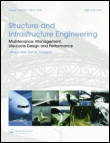
Structure and Infrastructure Engineering
Exploring Innovations in Structure and InfrastructureStructure and Infrastructure Engineering, published by TAYLOR & FRANCIS LTD, is a premier academic journal that serves as a vital resource in the fields of engineering and construction. Featuring an ISSN of 1573-2479 and an E-ISSN of 1744-8980, this journal has established its reputation as a leader in disseminating high-quality research. Since its inception, it has successfully transitioned through converged years from 2007 to 2024, earning a prestigious position within the Q1 quartile across multiple engineering disciplines, including Building and Construction, Civil and Structural Engineering, and Ocean Engineering, among others. Its impact is underscored by impressive Scopus rankings, particularly its 5th rank in Ocean Engineering within the top 95th percentile. The journal’s commitment to advancing knowledge in safety, risk, reliability, and quality makes it an indispensable platform for researchers, professionals, and students aiming to stay at the forefront of engineering innovations. Access to its comprehensive articles allows for a deeper understanding of contemporary challenges and solutions in infrastructure development.

Earthquake Engineering and Engineering Vibration
Bridging research and application in earthquake engineering.Earthquake Engineering and Engineering Vibration, published by Springer, is a leading international journal dedicated to the field of earthquake engineering, structural dynamics, and the associated vibrational research integral to understanding and mitigating seismic risks. With its print ISSN 1671-3664 and E-ISSN 1993-503X, the journal operates from its headquarters in New York, USA. The journal has achieved a commendable Q2 category ranking across multiple engineering disciplines, reflecting its importance to the building and construction, civil and structural engineering, geophysics, geotechnical engineering, and mechanical engineering fields. The journal serves as a vital platform for researchers, practitioners, and students to disseminate their findings, share innovative methodologies, and contribute to advancements in earthquake resilience and engineering practices. Earthquake Engineering and Engineering Vibration is committed to fostering open dialogue and collaboration within the global research community, ensuring that its contributions are both impactful and relevant to contemporary challenges in engineering and environmental safety.
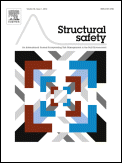
STRUCTURAL SAFETY
Championing quality and reliability in engineering.STRUCTURAL SAFETY is a premier journal dedicated to advancing the field of engineering with a focus on safety, risk, reliability, and quality in structural analysis and design. Published by Elsevier, this esteemed journal boasts an impressive Impact Factor and ranks in the top quartiles (Q1) of key categories including Building and Construction, Civil and Structural Engineering, and Safety, Risk, Reliability, and Quality. With a significant history spanning from 1982 to 2024, STRUCTURAL SAFETY fosters scholarly exchange among researchers, professionals, and students by publishing innovative and high-quality research articles that contribute to the safety and resilience of engineered structures. The journal operates without open access barriers, ensuring a broad audience can access invaluable insights in the engineering realm. Its distinguished Scopus rankings further underscore its impactful role within the academic community, making it an essential resource for anyone invested in the discipline of structural safety.
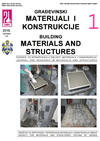
Gradevnski Materijiali I Konstrukcije-Building Materials and Structures
Shaping the future of construction through open-access research.Gradevnski Materijiali I Konstrukcije - Building Materials and Structures is a premier open-access journal dedicated to advancing the field of construction materials and structural engineering. Published by SOC MATERIALS & STRUCTURES TESTING SERBIA, this journal provides a platform for researchers, professionals, and students to share their innovative findings and developments in building materials. With a commitment to open-access since 2012, it fosters unrestricted availability of research for a wider audience, encouraging collaboration and knowledge dissemination. The journal features a diverse range of topics, including material testing, structural integrity, and sustainable construction practices, making it a vital resource for those engaged in the design and analysis of structural components. By fostering the advancement of research and practice in this crucial sector, Gradevnski Materijiali I Konstrukcije plays an essential role in shaping the future of construction and material science.

Revista Ingenieria de Construccion
Empowering Engineers with Open Access KnowledgeRevista Ingenieria de Construccion is a prominent open-access journal dedicated to advancing knowledge and practice in the fields of building and construction engineering, as well as civil and structural engineering. Published by the Pontificia Universidad Católica de Chile, specifically the Department of Engineering and Construction Management, this journal has been providing free access to quality research outputs since 1986, ensuring that vital information is available to both practitioners and academics globally. With its current placement in the Q4 category of both the Building and Construction and Civil and Structural Engineering quartiles, it serves as a platform for innovative studies and critical discussions, positioning itself strategically within the academic landscape. The journal is indexed in Scopus, ranking #157 in Building and Construction and #291 in Civil and Structural Engineering, reflecting the growing impact and relevance of its contributions. Researchers, professionals, and students are encouraged to engage with the rigorous and diverse content published within its pages, fostering a vibrant academic and practical discourse.
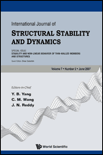
International Journal of Structural Stability and Dynamics
Pioneering Research in Engineering Dynamics.International Journal of Structural Stability and Dynamics is a renowned academic journal published by World Scientific Publishing Co. Pte. Ltd., based in Singapore. With an ISSN of 0219-4554 and an E-ISSN of 1793-6764, this journal serves as a vital platform for disseminating pioneering research in the fields of Aerospace Engineering, Applied Mathematics, Building and Construction, Civil and Structural Engineering, Mechanical Engineering, and Ocean Engineering. It holds impressive positionings within category quartiles—ranking Q1 in Building and Construction and Q2 in other relevant disciplines as of 2023—demonstrating its impact and significance within these scholarly arenas. The journal's Scopus rankings signify its commitment to quality research, with notable percentiles that place it among the top journals in applied mathematics and various engineering domains. As it converges from 2004 to 2024, the International Journal of Structural Stability and Dynamics remains dedicated to advancing knowledge and fostering innovations in structural engineering, making it an indispensable resource for researchers, professionals, and students alike.

Bulletin of the New Zealand Society for Earthquake Engineering
Elevating standards in civil and structural engineering practices.Bulletin of the New Zealand Society for Earthquake Engineering (ISSN: 1174-9857, E-ISSN: 2324-1543) is a leading scholarly journal published by the New Zealand Society for Earthquake Engineering, Inc., dedicated to advancing the field of earthquake engineering. Since its inception in 1970, the journal has provided a vital platform for the dissemination of innovative research, technical studies, and case reports related to civil and structural engineering, as well as geotechnical engineering and engineering geology. Recognized for its significant contributions, the journal holds a Q2 ranking in both the Civil and Structural Engineering and Geotechnical Engineering and Engineering Geology categories as of 2023. It serves as an invaluable resource for researchers, professionals, and students keen on enhancing their understanding of earthquake resilience and engineering practices. While the journal operates under subscription-based access, its rigorous peer-review process ensures that published articles meet the highest academic standards, making it a credible source for the global engineering community.
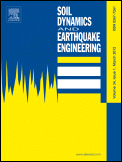
SOIL DYNAMICS AND EARTHQUAKE ENGINEERING
Exploring the Foundations of Seismic Safety and Soil BehaviorSOIL DYNAMICS AND EARTHQUAKE ENGINEERING is a premier academic journal published by ELSEVIER SCI LTD, focusing on the intersection of civil and structural engineering, geotechnical engineering, and soil science. Since its inception in 1986, the journal has established itself as a critical resource for advancing knowledge in these fields over nearly four decades, with a remarkable Q1 ranking in 2023 across multiple categories, including Civil and Structural Engineering, Geotechnical Engineering, and Soil Science. The journal’s impactful research, reflected in its high Scopus ranks, serves as a vital reference for both professionals and academics dedicated to understanding soil dynamics and mitigating earthquake hazards. Although it currently does not offer open access, the journal's rigorous peer-review process ensures that published articles provide substantial contributions to the understanding of soil behavior under seismic conditions. Whether you are a researcher, a practitioner, or a student, SOIL DYNAMICS AND EARTHQUAKE ENGINEERING offers essential insights and innovative methodologies pivotal for advancing your work in soil dynamics and earthquake engineering.

Bridge Structures
Advancing the Future of Bridge EngineeringBridge Structures is an esteemed academic journal dedicated to the field of structural engineering, particularly focusing on the design, analysis, and maintenance of bridge systems. Published by IOS PRESS, a reputable publisher known for its contributions to various scientific fields, the journal serves as an integral platform for disseminating innovative research and advancements within the domain. With an ISSN of 1573-2487 and an E-ISSN of 1744-8999, Bridge Structures has established itself over the years—covering contributions from 2005 to 2024. The journal has attained a commendable ranking within the Q3 category in Building and Construction and holds a position within the 28th percentile among its peers according to the Scopus rankings. Though the journal operates on a subscription basis, its commitment to advancing engineering knowledge is paramount, making it essential reading for researchers, practitioners, and students eager to deepen their understanding of bridge engineering. The journal not only explores theoretical advancements but also emphasizes practical applications, providing a well-rounded perspective on current challenges and solutions in the field of bridge structures.